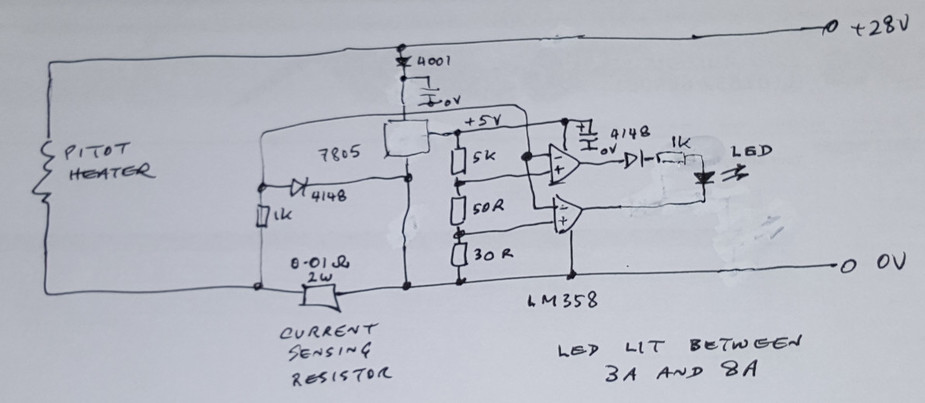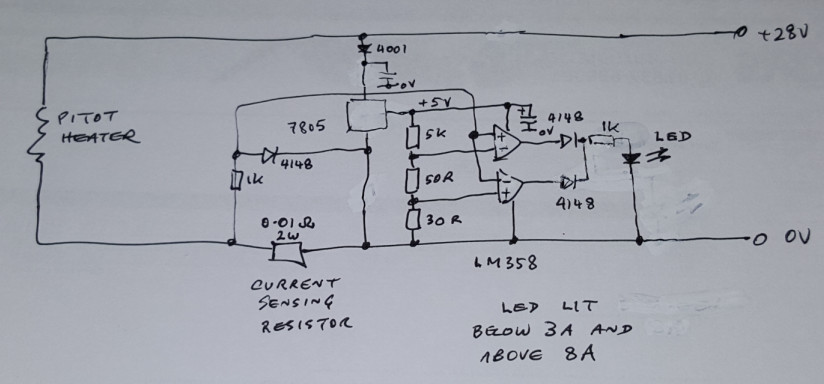It seems a good policy to turn on the pitot at the holding point. Not just before takeoff because one should at that point be looking out for other people landing, checking the heading bug matches the selected runway, etc.
If the “pitot working” indication is done with a current sensing relay then I would say it is fairly reliable. If there was a short or something approaching a short, the pitot CB should pop. On the TB20 this current sensing is done with the famous relays – that PCB has the other two relays for the landing + taxi light current sensing and these famously stop working if you put in LED lamps 
It’s true that light bulbs can draw more current when they go bad but usually only for a fraction of a second. They draw a LOT of current and often the (magnetic, i.e. high speed) CB pops. It’s otherwise bizzare that a CB should pop when a bulb blows…
tomjnx wrote:
Nothing is unthinkable and I have seen incandescent bulbs failing in a way they consumed more current (short between two windings)
So have I, and that was in a safety-critical application where you relied on the lamp current to tell if it were lit or not. I was very surprised that the lamp could fail in that way.
AeroPlus wrote:
However, I can’t remember having the 3 minutes or so limitation with the pitot heat on the Piper Archer 2 and 3, so it then must depend on the type of pitot heat you have installed as well.
And installation. Composites (well, the resins) used are quite temperature sensitive.
Flyer59 wrote:
Is the Pitot Heat Warning Light in the Annuciator Panel a reliable indication tha the pitot heat doesn’t work?
If there is current flowing then heat is somewhere generated. It might not be where you want it, but a short should eventually lead to a fuse blowing or a breaker tripping. So the flow of current is a good indication (especially if too little current isn’t enough to stop the warning). Question then is how the sensor and whatever is downstream can fail. It should be highly reliable. If you wanted to test it, popping the breaker/ removing the fuse should do it. Just remember that breakers, unless designed for it, shouldn’t be used as switches.
It is fairly easy to check the current drawn by the pitot heater. Look at the battery current with ALT OFF and turn the pitot heat on/off. Mine, 24V, is 5A.
It would be smart to arrange the LED to illuminate only when within some range but I have not seen this done. Obviously it would need something other than a crude reed relay.
Peter wrote:
It is fairly easy to check the current drawn by the pitot heater. Look at the battery current with ALT OFF and turn the pitot heat on/off. Mine, 24V, is 5A.
True. But if I wanted to check in flight, I probably wouldn’t do that (it would depend on the electrical system and avionics). In some aeroplanes you have indication of how much current the generator puts out, that should work too.
It would be smart to arrange the LED to illuminate only when within some range but I have not seen this done. Obviously it would need something other than a crude reed relay.
Exactly. That would be my first thought. But it might be unnecessarily complex.
But it might be unnecessarily complex.
This should do it:

May need a tweak or two but it’s the general idea. Parts cost about €3.
It uses current sensing in the ground lead. Sometimes it is preferred (for wiring reasons) to current sense in the + lead; the same principle can be used but with some changes e.g. an op-amp whose Vcm includes the +ve rail. Also one would need to watch the max Vs of that +5V regulator, relative to spikes in the aircraft bus (I would put in some protection). Also check the Vos drift of the 1972 op-amp, but better ones are dirt cheap.
(edited)
That would be the opposite of the Socata annunciators, and IMHO not “fail safe” (partly because it would also be OFF when you turned off the pitot heat) but is easy to do:

@Peter It’s the same with all annunciators that warn you of abnormal conditions (it can’t warn you if it has failed). But any such light on means there is something wrong, you don’t have to remember which ones should be on and keep an eye on them. And it’s a bit different when the annunciations are on a display.
Peter wrote:
partly because it would also be OFF when you turned off the pitot heat
It’s supposed to be off when the switch for pitot heat is off, because that’s normal. Unless you want to detect a situation where switch would be off but there would be current flowing anyway. PS: But you would want it on in case CB tripped/ fuse blew.